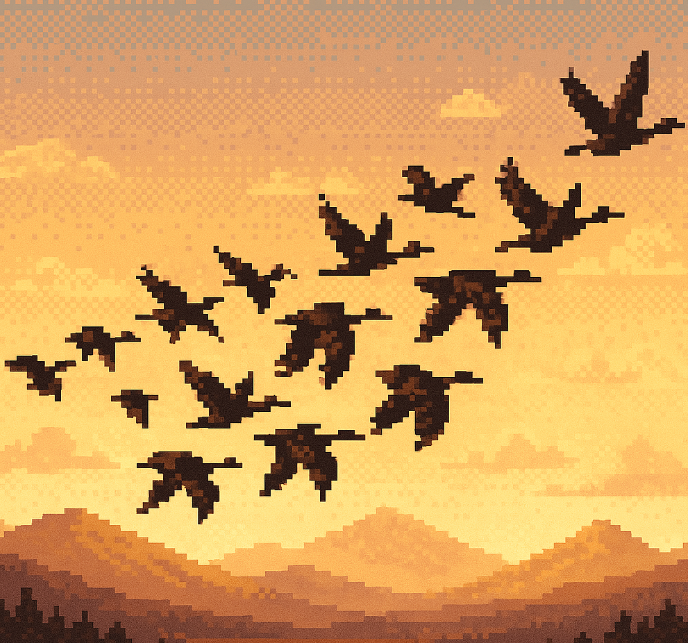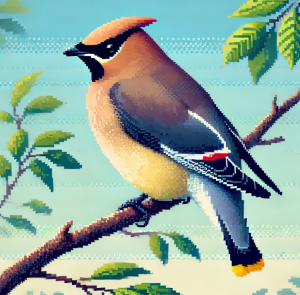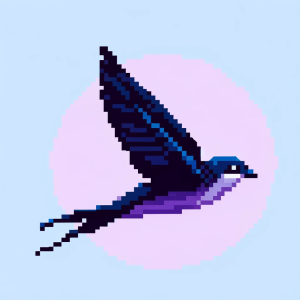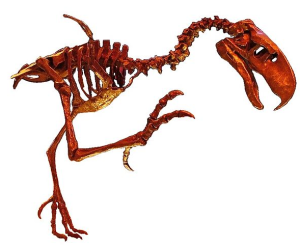
These Birds Are Racing Climate Change—and They’re Winning (Sort Of)
“Wait, birds are speeding up? Like, literally flying faster because of climate change?!”
Yep. That’s the latest twist in the high-stakes, high-altitude drama unfolding across the Arctic skies. Birds aren’t just flapping around randomly—some are rewriting their migration playbooks in real time to keep up with our warming planet. But here’s the kicker: even the best flyers might be running into limits they can’t outmaneuver.
So what happens when nature’s great navigators meet climate chaos? Let’s dive into the science behind this sky-high sprint.
The Spring Rush: Snowmelt Sets the Schedule
Life in the Arctic is like a giant seasonal pop-up shop: it opens in spring, explodes with activity, then slams shut as winter storms back in. For birds flying thousands of miles to breed there, timing is everything.
Traditionally, birds aim to arrive just after the snow melts, right when insects start buzzing and plants begin to bloom—a golden buffet for raising chicks. But with climate change melting snow earlier and earlier, many birds are arriving late to the feast.
Cue the panic-fueled migration makeover.
The New Rules of Migration
Scientists tracked over 500 spring migrations from 12 populations of Arctic birds—geese, swans, skuas, even tiny sandpipers. And they uncovered something wild: birds are showing up earlier, but not in the way you’d expect.
Here’s the juicy bit:
- Some birds are getting there faster—not by flying like jet fighters, but by spending less time on pit stops.
- They’re skipping snacks, cutting down on breaks at stopover sites to shave days off their journey.
- A few species are even reworking their routes or wintering closer to their Arctic breeding grounds.
Imagine running a marathon and deciding to sprint between water stations instead of stopping. That’s what these birds are doing—pushing themselves to make up time because the clock (and climate) is ticking.
Meet the MVPs: Waterfowl Leading the Pack
Not all birds are equal in this race.
Waterfowl—think geese and swans—are the migration overachievers here. The study found that greater white-fronted geese and tundra swans are showing up earlier and laying eggs sooner in years with early snowmelt. Why them?
They’re big, they’re built for endurance, and they carry energy reserves like a Costco run in their bellies. These “capital breeders” don’t need to forage immediately upon arrival—they come prepared.
And they use more pit stops, meaning they can fine-tune their journey by adjusting at each layover, like savvy travelers watching flight delays on their app.
But Not Everyone’s Keeping Up
Here’s where it gets tricky.
Other species—like long-tailed skuas or rough-legged buzzards—are showing up early, too, but without advancing their breeding. In fact, some are delaying laying eggs even when they arrive early. Why?
Because nature’s not just about speed. It’s also about readiness.
Some birds can’t breed until conditions are just right—like when rodents are plentiful (for predators) or when the snow finally uncovers nesting spots. No matter how early you arrive, if your food hasn’t shown up yet, you’re stuck waiting.
The Risky Business of Fast-Tracking
Now here’s a curveball: speeding up might not always be smart.
Cutting time at stopovers means birds might arrive with less energy. That could:
- Delay egg-laying (womp womp),
- Hurt chick survival (double womp),
- Or worse, reduce the birds’ chances of surviving the journey itself.
Some birds are rolling the dice—and it might be paying off in the short term. But long term? The jury’s still out.
Why This Matters for More Than Just Birds
Think of birds as flying data points. Their behaviors reveal how life is adapting—or struggling to adapt—to our rapidly changing world.
If even these super-adaptable, globe-trotting birds are bumping into limits, what does that mean for other animals? Or for us?
- It shows that nature can pivot—but only so fast.
- It highlights how deeply interconnected ecosystems are: one snowflake’s early melt can ripple through an entire species’ life cycle.
- And it reminds us that while resilience is powerful, it’s not invincible.
So What’s Next? Can Birds Keep Up?
Short-term trends look promising—at least for some species. Birds are adjusting, sometimes even outpacing the changes in snowmelt. But there’s a catch: those adjustments don’t always lead to better breeding outcomes.
Plus, climate change isn’t just shifting one dial. It’s turning up the heat, moving food sources, increasing storms, and throwing migration cues into chaos.
So while it’s amazing that birds are pulling off faster trips north, we’re still left wondering: how long can they keep this up?
Let’s Explore Together 🐦🌍
What do you think? Are these birds heroes of adaptation—or canaries in the climate coal mine?
🧠 How do you see this research affecting your life (or the way you think about climate change)?
🛫 If you were a migratory bird, how would you change your journey to stay ahead?
🧊 What’s the coolest fact you’ve ever heard about Arctic wildlife?
Drop your thoughts in the comments or share this story with a bird-loving friend. The skies are changing—and we’re all along for the ride.
Fight for Science:
The stakes for science have never been higher. In today’s turbulent political climate, staying informed is critical. Subscribe to our weekly newsletter to get the latest discoveries, major breakthroughs, and stories that matter most. Designed for teachers and science enthusiasts, this free resource enhances your teaching and understanding of science in real time. Subscribe today to ensure science stays at the forefront of public conversation! If you liked this blog, please share it—your referrals help This Week in Science reach more people when it’s needed most.



